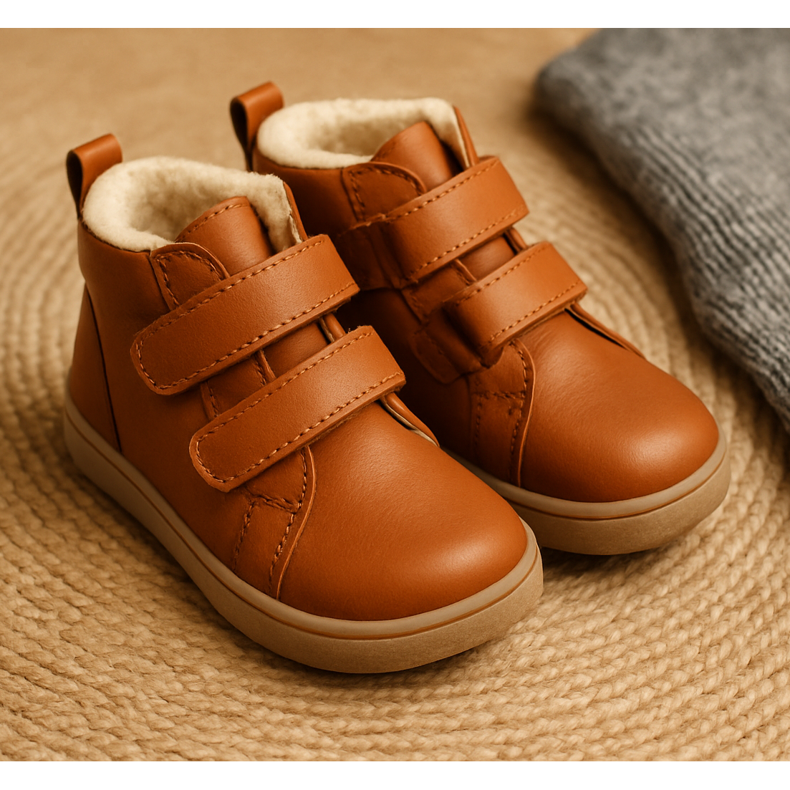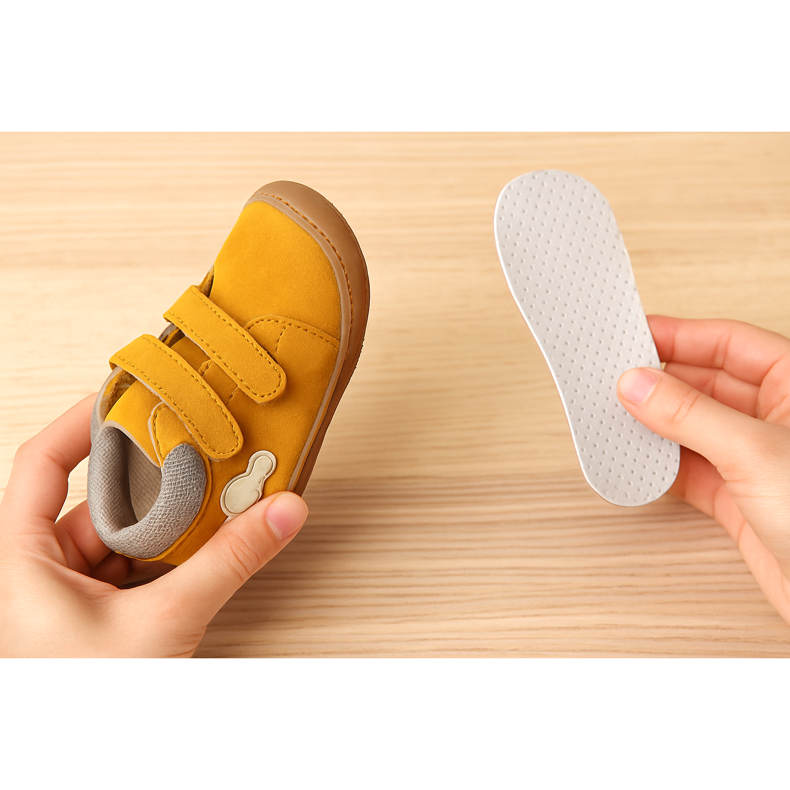
Children's shoes for four seasons - a complete guide for parents
Choosing the right shoes for a child is a challenge for every parent. How to choose the size? Which materials are the best? What to buy in spring, summer, autumn and winter? A comprehensive guide that will help you make the best decisions for your child's feet.

Why the right choice of shoes is so important
Children's feet develop extremely quickly - up to 6 years old, the growth rate is as much as 1.5-2 sizes a year! Incorrect footwear can lead to deformation, flatfoot or posture problems. The children's foot consists mostly of cartilage, which only is ossified in later years. This means that it is very susceptible to deformation. A good children's shoe should protect, support proper development, but at the same time do not limit natural movement. Remember - an investment in quality children's footwear is an investment in your child's health.
How to properly measure the child's feet
Measuring children's feet requires patience and precision. It is best to do it at noon, when the feet are naturally slightly larger. The child should stand on both feet, evenly spreading the weight. Measure both feet - they often differ in size. Make sure your fingers are not rolled up. Add 12-17 mm of slack to the length of the foot - young children need more space than older ones. Check the size every 2-3 months at toddlers and every 4-6 months with older children. Remember that the child will not always say that the shoes are too small - watch his gait and behavior.
Spring shoes for children - what to choose
Spring is a transitional time that requires universal footwear. The cubes reaching shoes are ideal - they provide stability and protection against moisture. The material should be breathable - natural leather or high quality synthetics. A flexible sole is important, which allows for a natural movement of the foot. Velcro fastening makes it easier to put on older children. Avoid too high boots that can limit movement in the ankle. Colors? Practical dark shades hide dirt, but children love bright colors - find a compromise.
Summer children's shoes - comfort and safety
In summer, ventilation and protection against injuries are a priority. Sandals should have a fastened heel - no Japanese for actively running children! The upper should protect your fingers from reflecting. Leather or high -quality synthetic materials provide comfort and hygieno. The sole must be non -slip - test on different surfaces. Choose material sneakers for summer, with good ventilation. Avoid completely tight footwear - the child's feet must 'breathe'. Remember about the caloses for rainy days - children love to jump on puddles!
Autumn shoes - preparation for difficult conditions
Autumn is a time of rain, mud and the first frost. Children's shoes must be waterproof or at least water. The upper upper protects against snow or leaves inside. It is worth investing in additional warming, but not at the expense of the size - too small shoes do not warm, they only stiffen. The sole must have a good tread to ensure walking on slippery leaves. Easy cleaning materials save parents' nerves. Consider two couples - warmer for cold days and lighter for a warm autumn.
Winter footwear - heat without compromise
Winter children's shoes are the most demanding category. They must be waterproof, warm, but at the same time allowing feet to "breathe". Natural warming materials (wool, fur) are better than synthetic. The upper should reach at least to the ankle, and preferably higher. The sole must be thick and flexible - tests in the cold show the difference. The clasp should be easy with gloves. Snow boots are perfect for playing in the snow, but too warm every day. The industry also offers technical membranes - Gore -Tex, Sympatex - which guarantee water resistance and breathing.
Kindergarten and school shoes - practical solutions
Kindergarten and school shoes must meet special requirements. First of all - easy to put on and take off yourself. Velcro is better than laces for young children. The shoe should be flexible but stable. Avoid too high models - they may be difficult. The material must be easy to clean and quick drying. The second pair of 'slippers' or 'changers' is often a requirement - choose breathable, hygienic materials. It is also worth having a pair at PE - light, airy sneakers with non -slip soles.